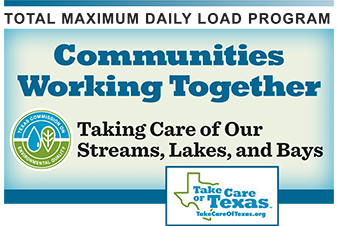Oso Bay: Oyster Waters Use
This is a completed assessment project to determine whether bacteria levels in Oso Bay could affect oyster beds in Corpus Christi Bay.

Courtesy of the Center for Coastal Studies
County: Nueces
Parameter: Bacteria
Coastal Basins: Bays and Estuaries, Nueces–Rio Grande Coastal Basin
Segment: 2485
On this page:
Background and Goals
To protect consumers, the Texas Department of State Health Services designates, monitors, and classifies shellfish harvesting areas along the Texas coast. DSHS has identified Oso Bay, Segment 2485OW, as an oyster harvesting area and classified it as restricted. Although there are no oyster beds in Oso Bay, because it empties into Corpus Christi bay, it is considered part of the larger bay’s harvesting area.
The use of coastal waters for harvesting shellfish — called the “oyster waters use” in the state’s standards for surface water quality — is the most commonly impaired use among Texas coastal waters. Microorganisms from human and animal waste may contaminate oysters and other shellfish, making them unsafe to eat, especially since some shellfish are eaten raw. However, DSHS restrictions are based on their estimated risk of bacterial contamination rather than on actual measurements of bacteria in oysters or oyster waters.
In response to the oyster waters restriction, the TCEQ's Total Maximum Daily Load (TMDL) Program gathered additional indicator bacteria data to assess water quality in the bay. The goal of the project was to determine whether the bacteria concentrations in Oso Bay exceeded the criteria for oyster harvesting.
Watershed Description
The Oso Bay watershed drains an area of approximately 255 square miles and is located in the northern-most portion of the Nueces-Rio Grande Coastal Basin. The watershed is wholly contained within Nueces County. The bay is an enclosed, shallow body of water situated along the southern shore of Corpus Christi Bay, with a surface area of approximately seven square miles.
Oso Bay receives fresh water from Oso Creek, a stream whose flow is dominated by permitted discharges. Oso Bay exchanges saltwater with Corpus Christi Bay. Ecologically, Oso Bay provides habitat for many plants and animals, and plays an influential role in water purification and storm protection.
Corpus Christi is the only major metropolitan area within the watershed’s boundaries. The only other large community in the watershed is Robstown. Economic activities in and around the bay include oil and gas refining and production, agriculture, manufacturing, and tourism.
Status
The final project report confirmed that Oso Bay is generally not meeting the standard for oyster water harvesting. This finding validates the risk assessment by the DSHS. Because bacteria concentrations spiked during rainfall events, stormwater runoff is the most likely source.
Two measures of bacteria were used to evaluate conditions — a median concentration over time and a percent of time the maximum concentration was exceeded. Five stations were monitored. At three of the stations, the acceptable median concentration was exceeded most of the time. At all five stations, concentrations higher than the maximum happened more than 90% of the time.
Bacteria concentrations were consistently higher than the criteria used to determine the possibility of health risks from eating oysters.
Stakeholders have completed TMDLs on two related projects to reduce bacteria in Oso Bay and Oso Creek. Implementation of those TMDLs is likely to reduce the amount of bacteria available to be taken in by oysters.
Get Involved
In all its TMDL projects, the TCEQ works with people who represent government, permitted facilities, agriculture, business, environmental, and community and private interests in the watershed. Notice of public meetings were posted on this website and in print and electronic media.
Reports
Contact the TMDL Program
Please e-mail tmdl@tceq.texas.gov, and mention the Oso Bay Oyster Waters project in the subject line. Or call us at 512-239-6682.




 Back to top
Back to top